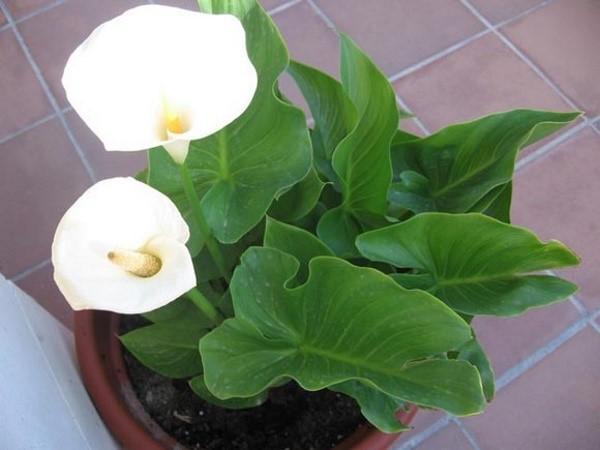We grow Ethiopian calla lilies at home
 Callou no wonder they are called calla. Under natural conditions, this beautiful plant with large leaves produces a long peduncle with a large snow-white blanket. Wild varieties with a monochromatic color of leaves and white bracts are still often found on windowsills. However, thanks to the work of breeders, calla lilies began to acquire other colors, and green leaf plates began to dazzle with light spots.
Callou no wonder they are called calla. Under natural conditions, this beautiful plant with large leaves produces a long peduncle with a large snow-white blanket. Wild varieties with a monochromatic color of leaves and white bracts are still often found on windowsills. However, thanks to the work of breeders, calla lilies began to acquire other colors, and green leaf plates began to dazzle with light spots.
The scientific name of the flower is zantedechia. You can distinguish Ethiopian calla from hybrid tuberous varieties by the roots: the first has a powerful rhizome, the second, respectively, have tubers.
What kind of soil does calla like?
The land for calla lilies must be selected weakly acidic and fertile, which allows moisture to pass through well. Flowers grow well in a soil mixture consisting of:
- turf land;
- humus;
- peat;
- sand.
Moisture requirements
Since the Ethiopian calla is by nature a swamp flower, suitable conditions must be created for it at home. To do this, provide abundant watering - the soil in the pot must be constantly moist. When the earthen coma is dried out, the leaves begin to turn yellow and wither. It's also a good idea to periodically spray and wipe them with a damp sponge. A flower pot should be chosen large and with a deep water tray.
The love of moisture makes calla a real weather forecaster. She feels the change in weather conditions and cries before the rain - droplets form at the tip of the leaves.
How much light does a calla need?
Zantedechia prefers light rooms, in the shade, flowering is weak or does not occur at all. He loves warmth, but is afraid of drafts, so it is better not to put it on windows that open for ventilation in winter.
Does Kalle need rest?
Although the Ethiopian calla lily does not have a tuber, it also needs a dormant period. For this species, it occurs in summer (the plant blooms in winter) and then the frequency of watering must be reduced, but it is absolutely impossible to stop watering. It is necessary to moisten the soil in the pot no more than once a week so that the earth does not dry out completely and the plant does not shed all the leaves. Of course, the bulk of the deciduous mass will die off, but it is necessary that a few leaves remain alive. So the calla will wake up faster and begin to lay flower stalks again. The fewer leaves remain, the later flowering will come.
In the summer, the flower can be planted in a flower bed, or you can simply take the pot out into the garden.